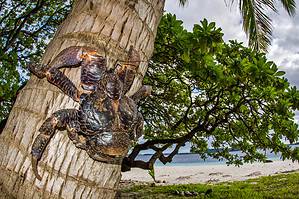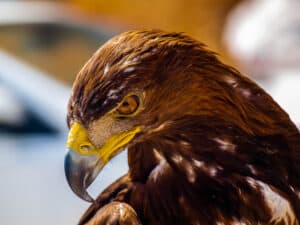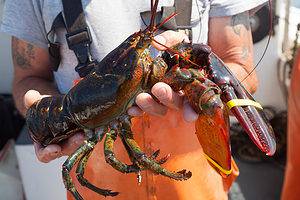Crabs look like sand dollars with legs! There are more than 4,500 species of crabs that come in a variety of sizes. The most common crabs are about the size of your hand whereas the largest crab, the giant Japanese spider crab, has a body that is 15 inches across and legs that have a span of 9-12 feet from tip of one pincher to the next! The tiniest crab is the pea crab, and as the name suggests, it is the size of a pea. You are probably familiar with hermit crabs, the orange crabs with beady black eyes that live in shells, but these are not actually crabs because they have a soft body and can’t grow their own shell like true crabs.
Most crabs live in the ocean or along the beaches of the ocean, but there are some species that are found in fresh water and rivers. Let’s take a look at what crabs eat.

How do crabs hunt?
Some crabs actively prey on smaller crabs, fish and crustaceans (shrimp, krill, prawn). The Dungeness crab will scour the ocean floor searching for prey and use its large claws to snatch a passing squid for example. The red king crab has one claw that is larger than the other and is used to crush its prey. Edible crabs also hunt their prey including smaller crabs. Other crabs are scavengers and spend their time searching for carrion, dead animals and plants. Scavengers will eat just about anything they can find that has settled on the ocean floor.
What do crabs eat?
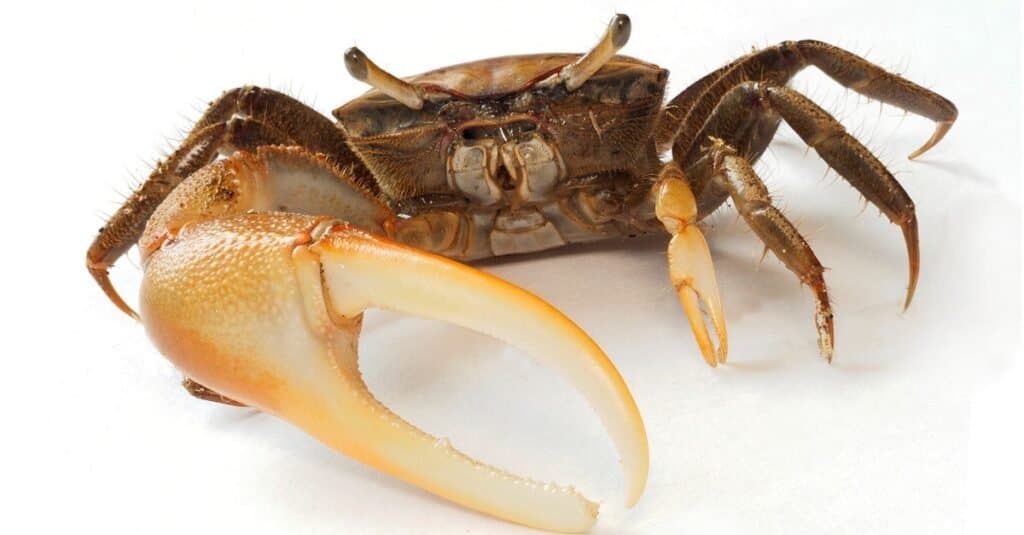
A
fiddler crab
displaying its massive pincer
©iStock.com/sdbower
Crabs eat an omnivorous diet. Smaller crabs eat algae, seaweed, worms, small clams, and shrimp. Larger crabs can eat squid, snails, mussels, other crabs and small fish. Some species of crabs can eat hard foods like barnacles, starfish and even sand dollars. Depending on the species there are some that are carnivores, some omnivores and some that are vegetarian.
A complete list of what crabs eat:
- Small fish
- Smaller crabs
- Crustaceans
- Shrimp
- Krill
- Prawn
- Carrion
- Squid
- Small clams
- Seaweed
- Mussels
- Whelks
- Algae
What eats crabs?
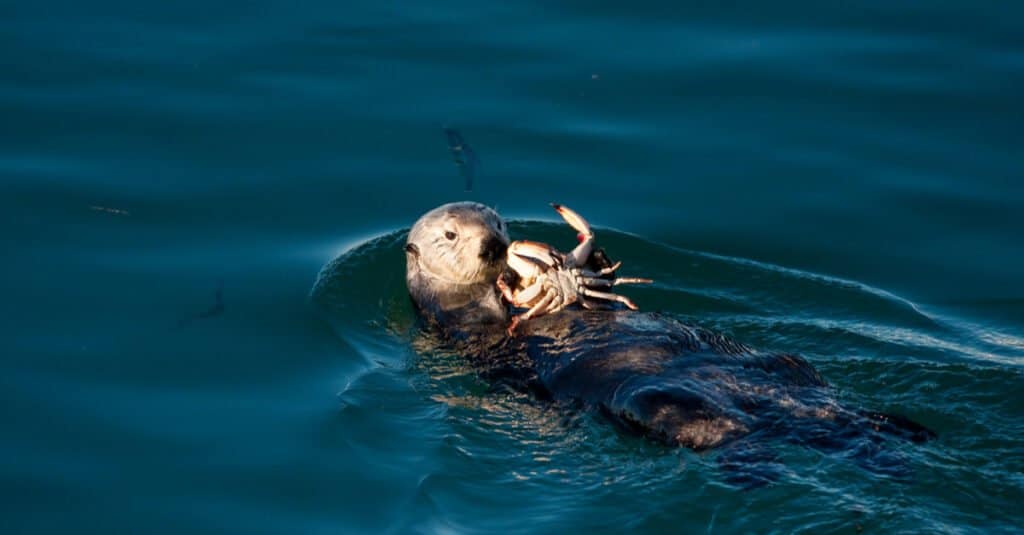
An
otter eating
a crab
©Jean-Edouard Rozey/Shutterstock.com
If you’ve ever had crab legs with butter sauce you know that humans eat (and enjoy!) crabs. Blue crabs are a popular crab with Maryland being the leading harvester and processor in the United States. Nearly fifty percent of the U.S. crabs come from the Chesapeake Bay. Alaskan king crabs are large crabs that are off the coast of Alaska. They can have leg spans of up to 5 feet! That’s a lot of crab meat. In the U.K. the most common crab is the Brown crab or Edible crab (I’m no linguistic genius but if you are going to have the word “edible” in your name I think your fate is set!). These crabs are located on every coast of the U.K. and are plentiful.
In the wild, large crabs like the Alaskan king crab have few natural predators. But smaller crab species can be eaten by fish-eating birds like the great blue heron, larger fish and sea turtles.
What does the smallest crab eat?
The smallest crab, the pea crab, is more like a parasite. It lives inside the shells of other mollusks and mussels. They eat whatever is left over from what its host eats. But since pea crabs are so small you can imagine they have a very minimal diet.
What does the largest crab eat?

Japanese spider crab at Manila Ocean Park
The largest crab, the Giant Japanese spider crab is a scavenger and feeds on dead animals and dead plants that it can find. Others will open shells of mollusks and eat the meat inside. These giant crabs live at great depths and therefore are not threatened by humans. They can live to be 100-years-old!
The photo featured at the top of this post is © iStock.com/sdbower
Thank you for reading! Have some feedback for us? Contact the AZ Animals editorial team.




